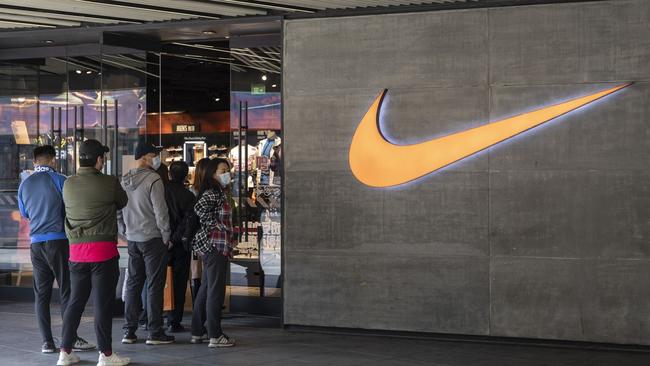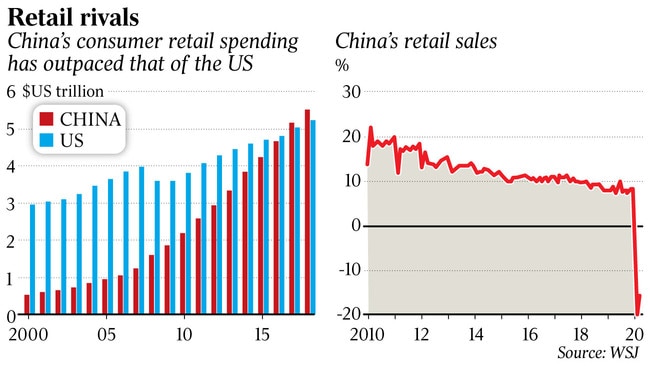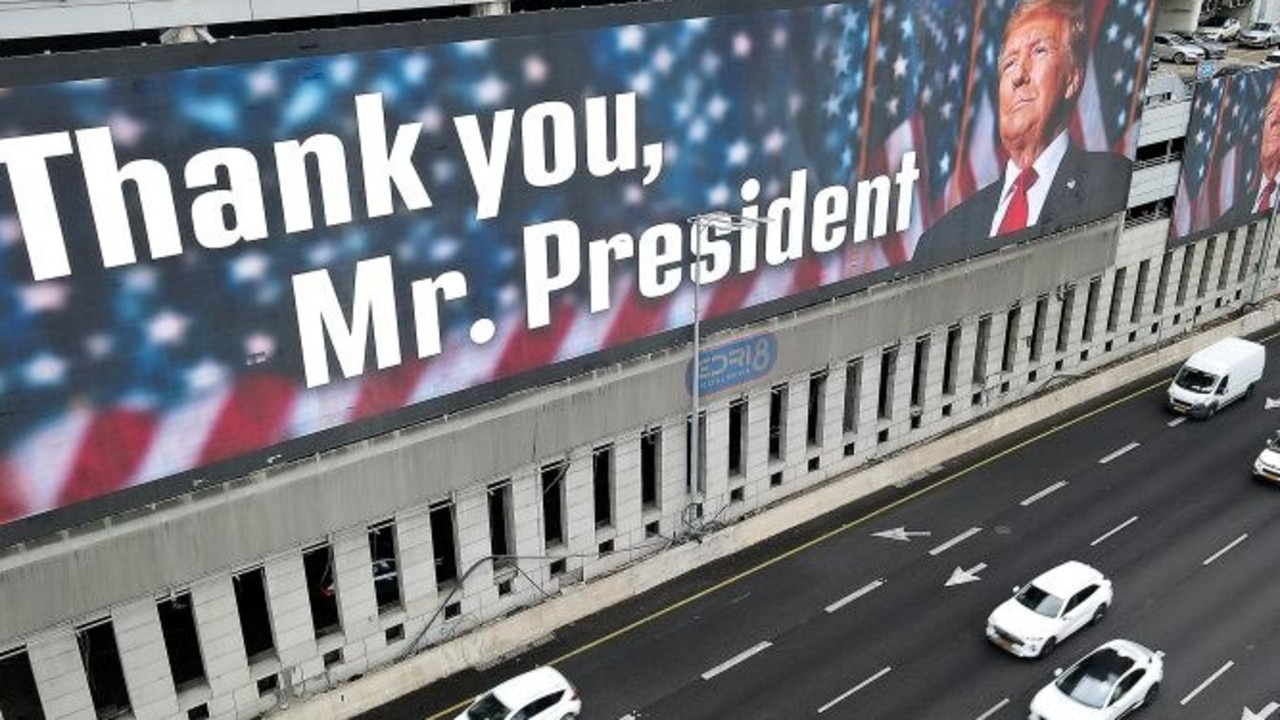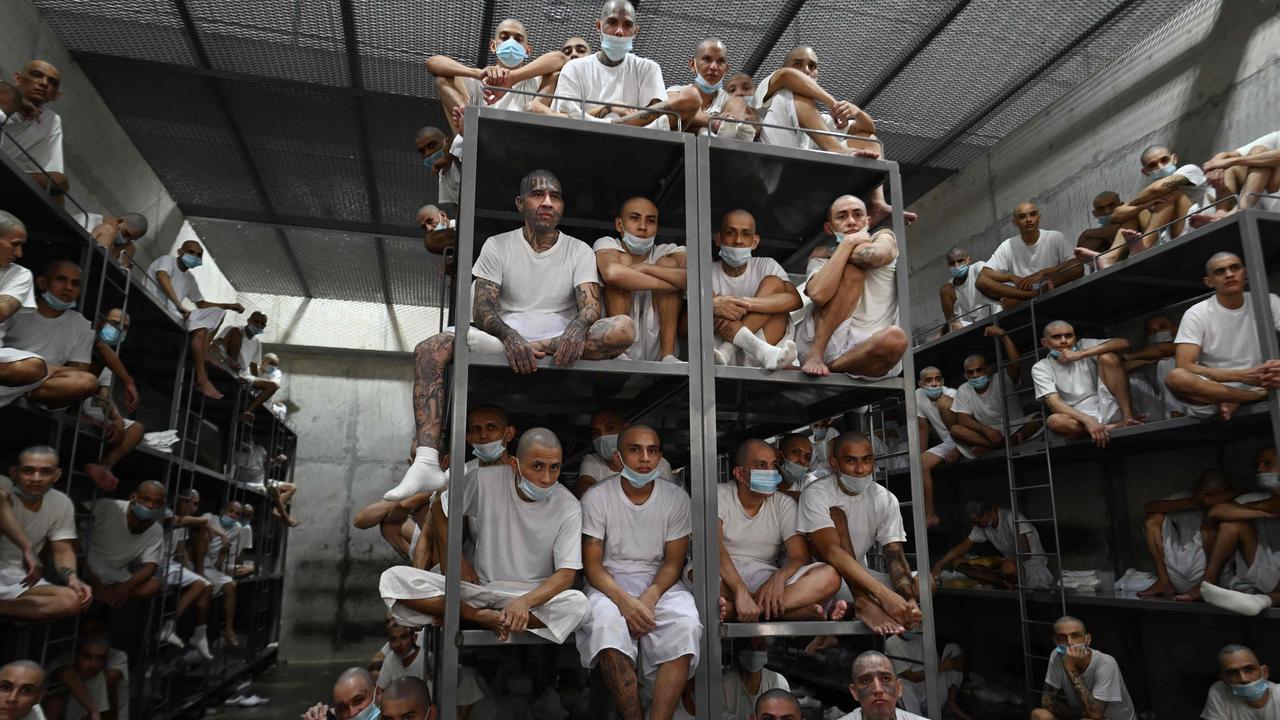Chinese consumers slow to reopen their wallets
Global brands are hoping China’s consumers will help rekindle growth post-coronavirus. They are facing an uphill battle.

Global brands are hoping China’s gigantic consumer market will help rekindle growth as the world tries to recover from the coronavirus pandemic. They are facing an uphill battle.
Companies from Lego to Domino’s Pizza say they are seeing a solid bounceback in China, at least compared with a month or two ago. But a full return to normal, much less growth, is proving harder because so many people have lost jobs and income, or want to save more.
“It is time to be more careful with spending,” said Wu Yun, a 40-year-old executive at a private Chinese conglomerate in Shanghai. Though his own income has not been affected by the crisis, Mr Wu said he was reining in spending, cancelling foreign holidays and planning to buy a new property.
China is the world’s largest consumer market, with $US5.8 trillion in retail sales last year. Its coronavirus epidemic peaked earlier than in the West, so its recovery serves as an important signpost for what might be to come in the US and Europe as retailers reopen.
After a 21 per cent year-over-year decline in the first two months of 2020, Chinese retail sales recovered somewhat in March, falling 16 per cent on year. That was better than some analysts had feared, and companies including Nike and L’Oreal cited encouraging Chinese demand in April earnings calls.
Online retailers fared best, with JD.com reporting a 10 per cent jump in first-quarter sales. Some traditional retailers also prospered: Nike reported that quarterly sales in China had increased 5 per cent on the year despite the crisis, while sales at L’Oreal rose 6 per cent due to strong digital sales and engagement.
By late April, most Chinese stores had been open for several weeks, and luxury goods makers LVMH Moet Hennessy Louis Vuitton and Kering, Gucci’s parent, were sounding bullish. Chinese consumers appear eager to return “to their previous patterns of consumption”, said Jean-Jacques Guiony, LVMH’s chief financial officer.

Other companies have been more measured, noting that life in China remains far from normal. Coca-Cola Co chief executive James Quincey told analysts that limits on gatherings in China were weakening consumption. Starbucks said in late March that its sales were down more than 40 per cent on the year for the same reason. Fashion chain Hennes & Mauritz said it was experiencing only a gradual recovery, while General Motors and Ford both had a brutal first quarter with sales falling 43 per cent and 35 per cent, respectively.
The Economist Intelligence Unit forecasts that Chinese consumption won’t claw its way back to growth until next year. UBS also expects 2020 to be a grind, with increased online spending insufficient to offset the slump in spending offline.
Official data put China’s urban unemployment rate at 5.9 per cent in March, equivalent to 27 million people. Independent estimates by UBS and others claim the true figure is nearer 80 million, with business closures decimating migrant workers’ jobs in particular.
Analysts note that official Chinese data doesn’t count people in informal jobs, including many service-sector and casual workers. It also doesn’t reflect people who have been temporarily furloughed or experienced pay cuts.
A mid-April McKinsey & Co survey of Chinese consumers found that 40 per cent said they would be very careful about spending money; only 13 per cent said they wouldn’t. Another survey, by the People’s Bank of China, found that 53 per cent of depositors planned to save more from now on, compared with 22 per cent who expected to spend more.
At one Shanghai mall, staff at multiple stores said traffic picked up in March — many businesses had reopened in early February, but few shoppers initially ventured out — but was still only at about 75 per cent of previous levels. On a usually bustling street nearby, more than half the shops had closed or were seeking new tenants. The owner of one fashion store said business was the worst she had ever experienced, and that she planned to leave Shanghai after 20 years and return to her home town.
Official anxiety over the recovery in China — which has seen a steady drip of new coronavirus cases — is evident in Beijing’s flow of edicts about the importance of rebooting consumption, and in the barrage of initiatives to tempt consumers back into the marketplace.
Several companies are pushing ahead with China investments, banking on the country’s long-term prospects. BMW recently started construction of a $US3.2bn ($5bn) factory in the northeastern city of Shenyang. Walmart said it would invest $US425m in Wuhan as part of a massive nationwide expansion program over the next five to seven years. “That hasn’t changed,” a spokesman said.


